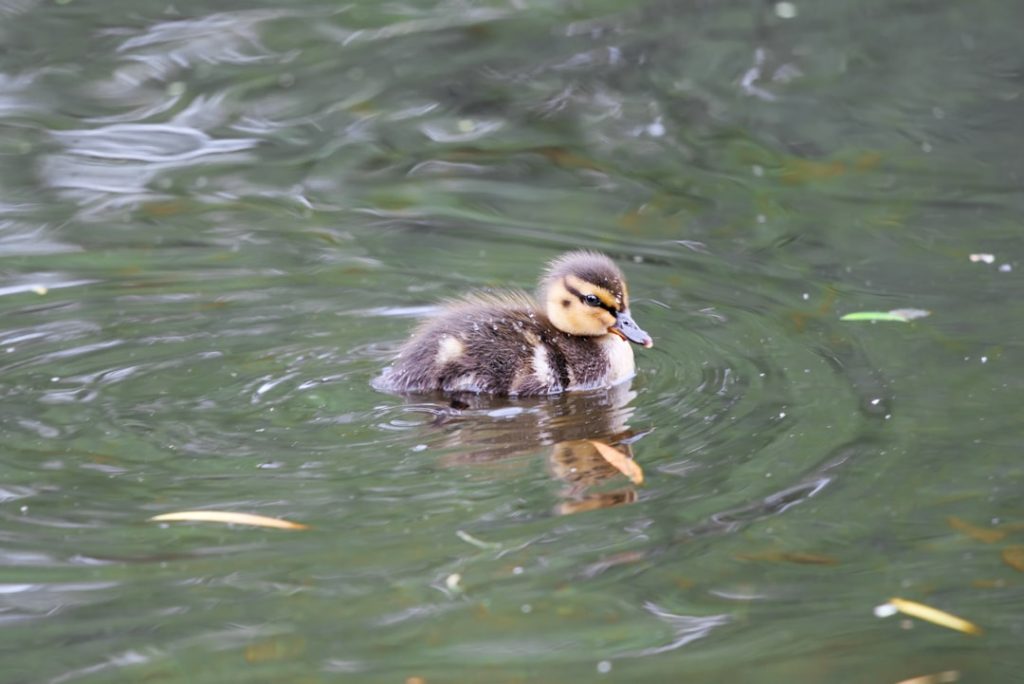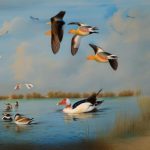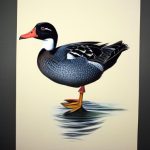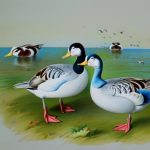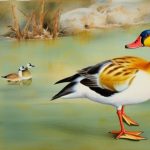Duck breeding is the process of mating ducks to produce offspring with desirable traits. It is important to understand the basics of duck breeding in order to successfully raise healthy and productive ducks. Ducks are known for their high fertility rates and can produce a large number of offspring in a single breeding season. Understanding the reproductive cycle of ducks is crucial for successful breeding. Ducks typically reach sexual maturity at around 5-7 months of age, depending on the breed. They are seasonal layers, meaning they lay eggs during specific times of the year, usually in the spring and summer months. It is important to be aware of these natural breeding patterns when planning to breed ducks.
Duck breeding also involves understanding the different breeds and their specific characteristics. There are many different breeds of ducks, each with its own unique traits and qualities. Some breeds are known for their excellent egg-laying abilities, while others are prized for their meat production. Understanding the specific traits of each breed is essential when selecting breeding stock and planning for desired outcomes. Additionally, understanding the genetics of duck breeding is important for producing offspring with desired traits. By understanding the basics of genetics, breeders can make informed decisions when selecting breeding stock and creating breeding programs to achieve specific goals. Overall, a solid understanding of duck breeding is essential for successful and responsible breeding practices.
Table of Contents
Key Takeaways
- Understanding Duck Breeding:
- Ducks reach sexual maturity at around 5-7 months old.
- Ducks are seasonal breeders, with peak breeding season in the spring and early summer.
- Selecting Breeding Stock:
- Choose breeding stock that is healthy, with good body conformation and temperament.
- Look for ducks that have a history of good egg production and successful hatching.
- Creating the Ideal Breeding Environment:
- Provide a quiet and secluded area for breeding ducks to minimize stress.
- Ensure the breeding area has access to clean water and suitable nesting materials.
- The Breeding Process:
- Ducks typically mate through a process called “forced copulation” where the male mounts the female.
- Ducks lay eggs in clutches and will often lay one egg per day until the clutch is complete.
- Caring for Ducklings:
- Ducklings should be kept warm and dry, with access to clean water and suitable feed.
- Provide a safe and secure environment for ducklings to prevent predation and accidents.
- Common Breeding Challenges:
- Infertility and poor hatching rates can be common challenges in duck breeding.
- Inadequate nutrition and stress can also impact breeding success.
- Breeding for Desired Traits:
- Select breeding stock that exhibits the desired traits, such as egg production, meat quality, or specific color patterns.
- Consider crossbreeding to achieve specific traits or hybrid vigor in duck offspring.
Selecting Breeding Stock
Selecting the right breeding stock is crucial for successful duck breeding. When choosing breeding stock, it is important to consider the specific traits and characteristics that are desired in the offspring. This may include traits such as egg production, meat quality, or specific physical attributes. It is also important to select breeding stock that is healthy, free from genetic defects, and has a good temperament. By carefully selecting breeding stock, breeders can improve the overall quality of their flock and achieve their breeding goals.
When selecting breeding stock, it is important to consider the breed standards for each specific breed. Breed standards outline the ideal physical characteristics and traits for each breed, and breeders should strive to select ducks that closely match these standards. Additionally, it is important to consider the genetic diversity of the breeding stock. Inbreeding can lead to genetic defects and health issues in offspring, so it is important to introduce new bloodlines into the breeding program to maintain genetic diversity. Overall, selecting breeding stock is a critical step in the duck breeding process and can greatly impact the success of the breeding program.
Creating the Ideal Breeding Environment
Creating the ideal breeding environment is essential for successful duck breeding. Ducks thrive in environments that provide ample space, access to water, and protection from predators. When creating a breeding environment, it is important to provide ducks with a comfortable and secure space for mating and nesting. This may include providing nesting boxes or areas with suitable nesting materials for ducks to lay their eggs. Additionally, access to clean water is essential for duck breeding, as ducks require water for mating and egg production.
It is also important to provide ducks with a balanced diet to support their reproductive health. A diet rich in nutrients such as protein, vitamins, and minerals can help support healthy egg production and overall reproductive success. Providing ducks with access to natural foraging areas can also help support their reproductive health and provide enrichment for the birds. Overall, creating the ideal breeding environment involves providing ducks with the necessary resources and conditions to support their natural mating and nesting behaviors.
The Breeding Process
The breeding process for ducks involves several key stages, including courtship, mating, egg laying, and incubation. Courtship behavior in ducks typically involves males displaying elaborate mating displays to attract females. This may include vocalizations, head bobbing, and wing flapping to impress potential mates. Once courtship is successful, mating occurs, typically in or near water. Ducks are known for their monogamous mating behavior, with pairs forming strong bonds during the breeding season.
After mating, female ducks will begin laying eggs in their chosen nesting site. It is important to provide nesting boxes or suitable nesting materials to encourage females to lay their eggs in a safe and secure location. Once eggs are laid, they can be collected for incubation or left with the mother duck for natural incubation. Incubation typically takes around 28 days, during which time the eggs are kept warm and turned regularly to ensure proper development.
Caring for Ducklings
Caring for ducklings involves providing them with a warm and secure brooding area, access to clean water, and a balanced diet to support their growth and development. Ducklings require a warm environment to thrive, especially during the first few weeks of life. Providing a heat source such as a heat lamp or brooder can help keep ducklings warm and comfortable. Additionally, access to clean water is essential for ducklings, as they need water for drinking and grooming from an early age.
A balanced diet is also crucial for the healthy growth of ducklings. Starter feeds specifically formulated for ducklings can provide them with the necessary nutrients for growth and development. It is important to monitor the health and behavior of ducklings closely during this critical stage and provide any necessary care or intervention as needed. Overall, caring for ducklings involves providing them with the necessary resources and conditions to support their healthy growth and development.
Common Breeding Challenges
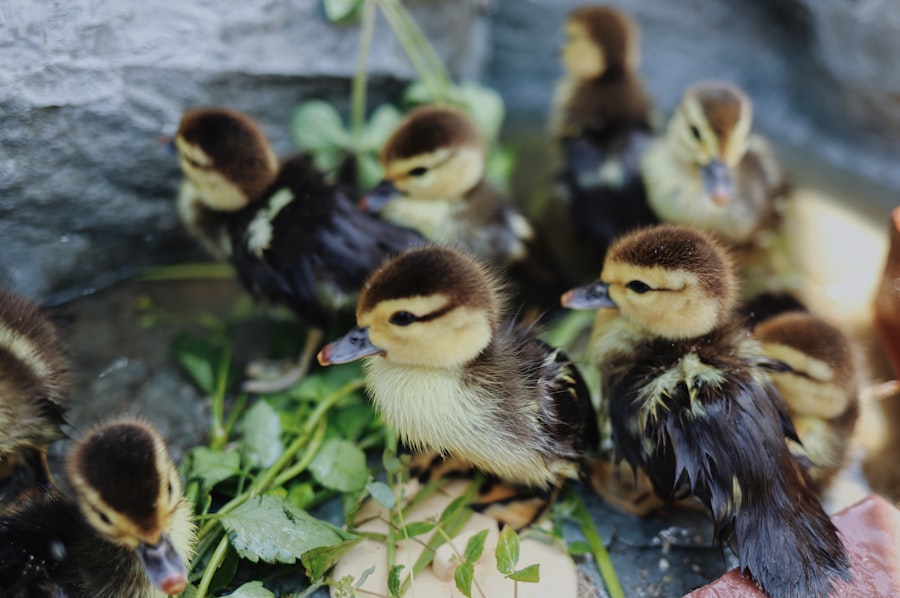
Breeding ducks can come with its own set of challenges, including fertility issues, egg production problems, and genetic defects. Fertility issues can arise due to factors such as age, health, or environmental stressors. It is important to monitor the fertility of breeding stock closely and address any potential issues early on to support successful breeding outcomes. Egg production problems can also occur, such as low egg production or poor egg quality. Providing ducks with a balanced diet, access to clean water, and a suitable nesting environment can help support healthy egg production.
Genetic defects can also be a concern in duck breeding programs, especially if inbreeding occurs. Introducing new bloodlines into the breeding program can help maintain genetic diversity and reduce the risk of genetic defects in offspring. Overall, being aware of common breeding challenges and taking proactive measures to address them can help support successful duck breeding outcomes.
Breeding for Desired Traits
Breeding for desired traits involves carefully selecting breeding stock with specific traits and characteristics in mind. This may include traits such as egg production, meat quality, or specific physical attributes. By selecting breeding stock with these desired traits, breeders can work towards improving the overall quality of their flock and achieving specific breeding goals.
In order to breed for desired traits, it is important to have a clear understanding of genetics and how traits are passed down from parent birds to offspring. By understanding the basics of genetics, breeders can make informed decisions when selecting breeding stock and creating breeding programs to achieve specific goals. It is also important to monitor the offspring closely and select birds with the most desirable traits for future breeding stock.
Overall, breeding for desired traits involves careful selection of breeding stock, understanding of genetics, and monitoring offspring closely to achieve specific breeding goals. By taking a strategic approach to breeding for desired traits, breeders can work towards improving the overall quality of their flock and achieving success in their breeding programs.
If you’re interested in duck breeding, you may also want to learn about the importance of providing a suitable coop for turkeys. Check out this informative article on poultrywizard.com to understand the essential requirements for keeping turkeys and how a well-designed coop can contribute to their health and well-being.
FAQs
What is duck breeding?
Duck breeding refers to the process of mating and raising ducks for the purpose of producing offspring with desirable traits, such as for meat, eggs, or ornamental purposes.
What are the different methods of duck breeding?
There are several methods of duck breeding, including natural mating, artificial insemination, and selective breeding. Natural mating involves allowing ducks to mate on their own, while artificial insemination involves manually collecting and inseminating duck semen. Selective breeding involves choosing ducks with desirable traits to produce the next generation.
What are some common duck breeds used for breeding?
Common duck breeds used for breeding include Pekin, Mallard, Muscovy, Khaki Campbell, and Rouen. These breeds are often chosen for their meat, egg-laying, or ornamental qualities.
What are some important considerations for duck breeding?
Important considerations for duck breeding include providing proper nutrition, housing, and healthcare for the ducks. It is also important to consider the genetic traits and characteristics of the ducks being bred in order to produce healthy and desirable offspring.
What are some challenges associated with duck breeding?
Challenges associated with duck breeding may include managing breeding ratios, preventing inbreeding, and ensuring the health and well-being of the ducks and their offspring. Additionally, market demand and regulations may also pose challenges for duck breeders.
Meet Walter, the feathered-friend fanatic of Florida! Nestled in the sunshine state, Walter struts through life with his feathered companions, clucking his way to happiness. With a coop that’s fancier than a five-star hotel, he’s the Don Juan of the chicken world. When he’s not teaching his hens to do the cha-cha, you’ll find him in a heated debate with his prized rooster, Sir Clucks-a-Lot. Walter’s poultry passion is no yolk; he’s the sunny-side-up guy you never knew you needed in your flock of friends!

